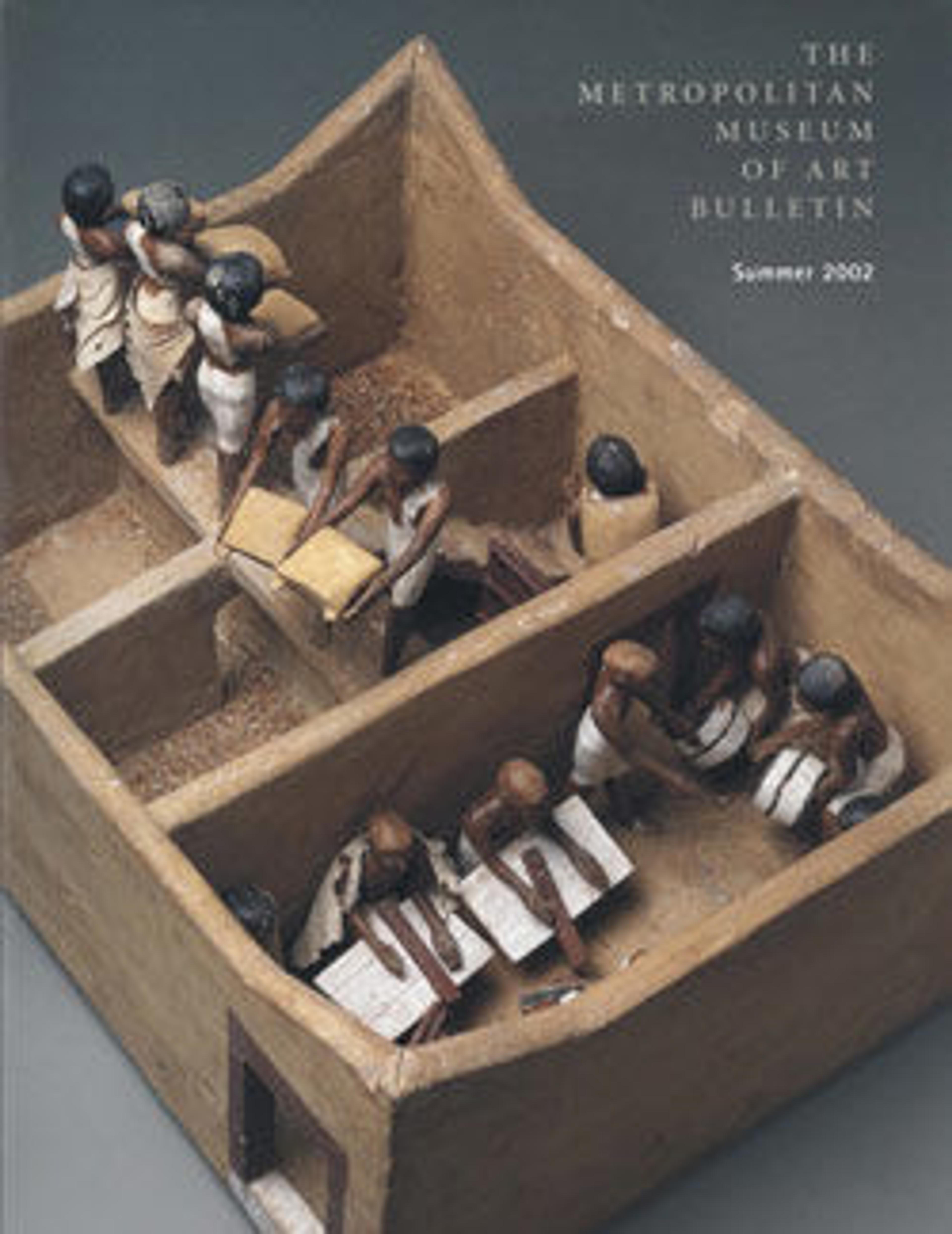Sweret Bead
The sweret is a barrel-shaped bead-amulet made of carnelian. This element of funerary jewelry was usually found at the throat of a mummy, but Wah's seweret-bead is strung on a short length of linen thread suggesting that it was intended to be worn as a ring. It was found clutched in Wah's left hand.
Wah's jewelry was revealed when his mummy was x-rayed in 1939. To no one's surprise, the films showed that his body had been adorned with typical funerary jewelry of the early Middle Kingdom: a broad collar, bracelets, and anklets made of tubular beads (40.3.2–.10) of Egyptian faience, and this sweret-bead. Unexpectedly, he also had personal jewelry of stone and metal (40.3.11–.19). When the mummy was unwrapped in 1940, the superb jewelry was seen for the first time since Wah's burial some 39 centuries earlier.
Wah's jewelry was revealed when his mummy was x-rayed in 1939. To no one's surprise, the films showed that his body had been adorned with typical funerary jewelry of the early Middle Kingdom: a broad collar, bracelets, and anklets made of tubular beads (40.3.2–.10) of Egyptian faience, and this sweret-bead. Unexpectedly, he also had personal jewelry of stone and metal (40.3.11–.19). When the mummy was unwrapped in 1940, the superb jewelry was seen for the first time since Wah's burial some 39 centuries earlier.
Artwork Details
- Title:Sweret Bead
- Period:Middle Kingdom
- Dynasty:Dynasty 12
- Reign:reign of Amenemhat I, early
- Date:ca. 1981–1975 B.C.
- Geography:From Egypt, Upper Egypt, Thebes, Southern Asasif, Tomb of Wah (MMA 1102), Mummy, in left palm near index finger, MMA excavations, 1920
- Medium:Carnelian, linen thread
- Dimensions:L. 2 cm (13/16 in.); diam. 1.1 cm (7/16 in.)
- Credit Line:Rogers Fund and Edward S. Harkness Gift, 1940
- Object Number:40.3.1
- Curatorial Department: Egyptian Art
More Artwork
Research Resources
The Met provides unparalleled resources for research and welcomes an international community of students and scholars. The Met's Open Access API is where creators and researchers can connect to the The Met collection. Open Access data and public domain images are available for unrestricted commercial and noncommercial use without permission or fee.
To request images under copyright and other restrictions, please use this Image Request form.
Feedback
We continue to research and examine historical and cultural context for objects in The Met collection. If you have comments or questions about this object record, please contact us using the form below. The Museum looks forward to receiving your comments.
